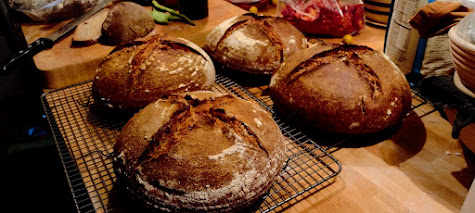I have zero experience with actually
using a Snelgrove Board- but have great hope that they are going to at least lessen one of my chores- catching swarms. I don't know how many I've caught over the years, I guess I'd guess 50-75, though it seems like more (might be), and most of them from my own hives. I have been fortunate in the past 4 or 5 years in that I work from home, and though its not billable hours to take a break and catch a swarm,- I see them swarming (the ones on my roof), and can get them hived pretty quick, and get back to AutoCAD.
But other hives are lots farther away, and I have no way of catching these if they do swarm. Last year I lost the mother-of-all-swarms in my best hive, and it was 60 feet up a cedar tree. I think that's the second one ever that I lost- and its painful to see it launch out into the blue sky, with no way of catching it. It caught me entirely off guard (happening on April 1st).
 |
| Drawing it up my guess for and SB so I can remember it later |
So in the last few years I've been doing what my beekeeper friend Jim does, and that is, go through every hive once a week from April to July, and either cut out, or move out, queen cells. Plus, I move empty comb down the center of the brood chambers, and pull out honey combs and put them in supers on top. Its a bit awkward, as I am often moving pollen up into my supers, and it gets confusing. But- it does seem to work, though lots of people say cutting cells is way too late. It might be- but in two years, its worked OK.
But I don't trust it- and the Snelgrove board, which I just learned about from Michael Jaross in the Mt Baker Bee group, seems promising, Its an oldish British method, apparently time consuming, but I like the idea of doing something proactive, and not, as in the past, splinting hives and losing honey. Or not splitting, and losing bees.
So I begin this with making a bunch of Snelgrove boards. I made 8. It took me a day- but I started out being optimistic that it would be half a day. Here are the steps.
 |
After cutting .25" ACX panels, I ripped 2x4s to 0.375" and start
cutting them en-masse for the different parts |
 |
| Then I lay them out on tbe first board to get the arrangement right,,, |
 |
| ...glue the backs.... |
...and start stapling , using a quick jig.
 |
Finished one side. The other side is exactly a mirror image. Takes
some thinking to coordinate, and I got a few things wrong. |
 |
Then I cut hardwood "doors" from scrap. I made these thinner, and about
3.25" wide, and was glad to use hardwood for durability. |
 |
| And here are the boards, but without doors. |
 |
I cut the hardwood doors, then predrilled them for #6 machine screws and
nylon lock nuts. |
 |
This is how I did the doors- little screw handles and
Teak hardwood. The doors need to be thinner than
the adjacent boards. |
 |
| The finished stack- with screens and ready to install. |













Comments
Post a Comment